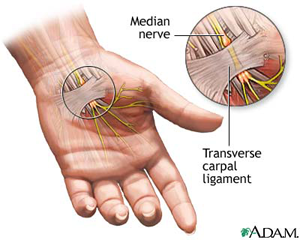
Contact Us: 703.648.9800

Carpal Tunnel Nonsurgical Release Using Ultrasound Guidance
Carpal Tunnel is the most common nerve compression problem of the upper extremity. It happens when the median nerve gets compressed in the wrist, commonly by swollen tendons and repetitive use. In addition, we frequently see it in patients with neck problems, also known as double crush syndrome . Carpal tunnel syndrome affects about 1 percent of the general population and 5 percent of the working population and surgical treatment for carpal tunnel syndrome is the most frequent surgery of the hand and wrist. However, do all of these patients need surgery? In our clinical experience, a new technique called nerve hydro dissection may be a better answer for some patients. Rather than an open surgery, this procedure can be performed by a doctor using a needle under ultrasound guidance. Small amounts of fluid are injected around the nerve to “free up” the median nerve (which can become scarred and adhere to its surrounding tendons). This allows the nerve to glide easier and many times has the same effect as a surgical release-the numbness, tingling, and pain.

Compression of the Median Nerve
A diagnosis of carpal tunnel syndrome may follow testing the affected hand for numbness, tingling, weakness and/or pain in specific areas. Muscle and nerve conduction tests may also help affirm or rule out carpal tunnel syndrome.